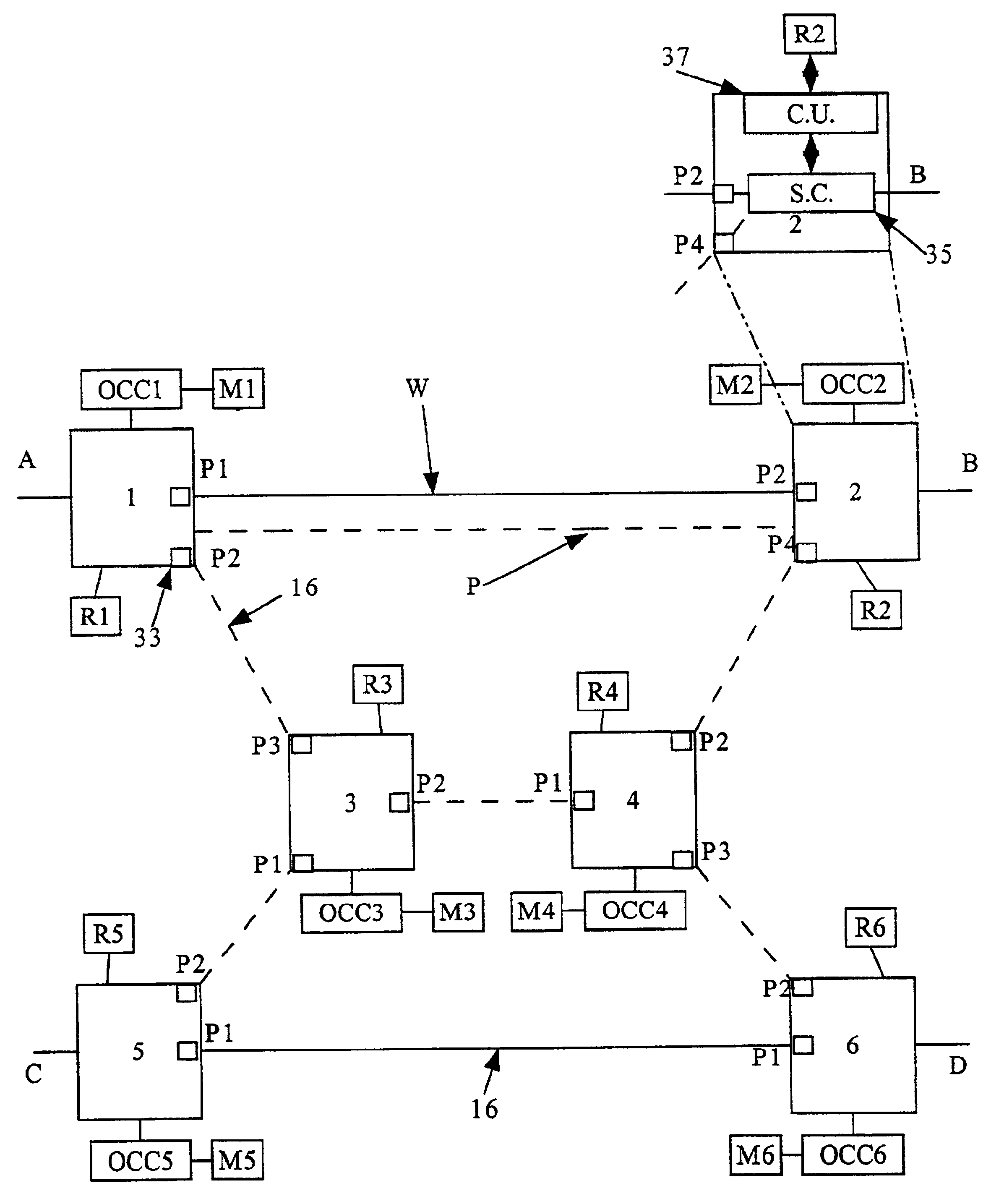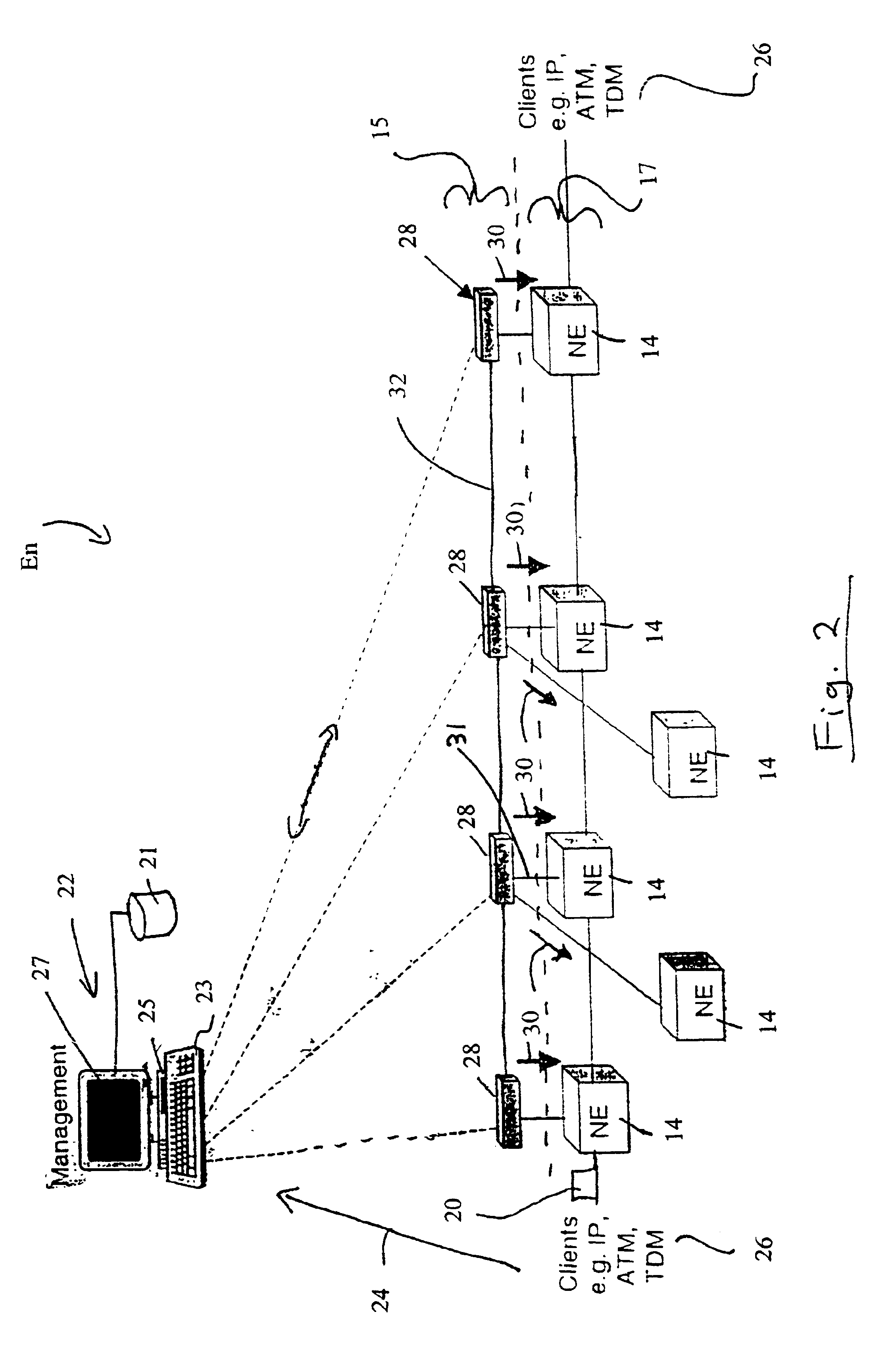Shared mesh signaling algorithm and apparatus
a signaling algorithm and mesh technology, applied in the field of shared mesh signaling algorithm and apparatus, can solve the problems of two types of failures in the telecommunication network, the frequency of cable cuts is frequent and almost impossible to avoid, and the equipment failures resulting from man-made or natural disasters are additional possibilities
- Summary
- Abstract
- Description
- Claims
- Application Information
AI Technical Summary
Benefits of technology
Problems solved by technology
Method used
Image
Examples
Embodiment Construction
[0027]Referring to FIG. 1, a global telecommunication network 10 contains a series of sub-networks An, Bn, Cn, Dn, En interconnected by bulk data transmission mediums 12. These mediums 12 can consist of such as but not limited to optical fibre, wireless, and copper lines which are collectively referred to as the Backbone Network. Each sub-network An, Bn, Cn, Dn, En contains a plurality of network elements 14 interconnected by conduits 16, which can be collectively referred to as path layer 17 (see FIG. 2). These conduits 16 can consist of fibre optic cables, DSL (Digital Subscriber Loop), cable, and wireless mediums, wherein each conduit 16 can be capable of providing the transmission of multiple wavelengths 18 as required by the telecommunication network 10. The transmission structure of the telecommunication network 10 can be used by a variety of different carriers, such as ILECs, CLECs, ISPs, and other large enterprises to monitor and transmit a diverse mixture of data packets 20...
PUM
 Login to View More
Login to View More Abstract
Description
Claims
Application Information
 Login to View More
Login to View More - R&D
- Intellectual Property
- Life Sciences
- Materials
- Tech Scout
- Unparalleled Data Quality
- Higher Quality Content
- 60% Fewer Hallucinations
Browse by: Latest US Patents, China's latest patents, Technical Efficacy Thesaurus, Application Domain, Technology Topic, Popular Technical Reports.
© 2025 PatSnap. All rights reserved.Legal|Privacy policy|Modern Slavery Act Transparency Statement|Sitemap|About US| Contact US: help@patsnap.com



